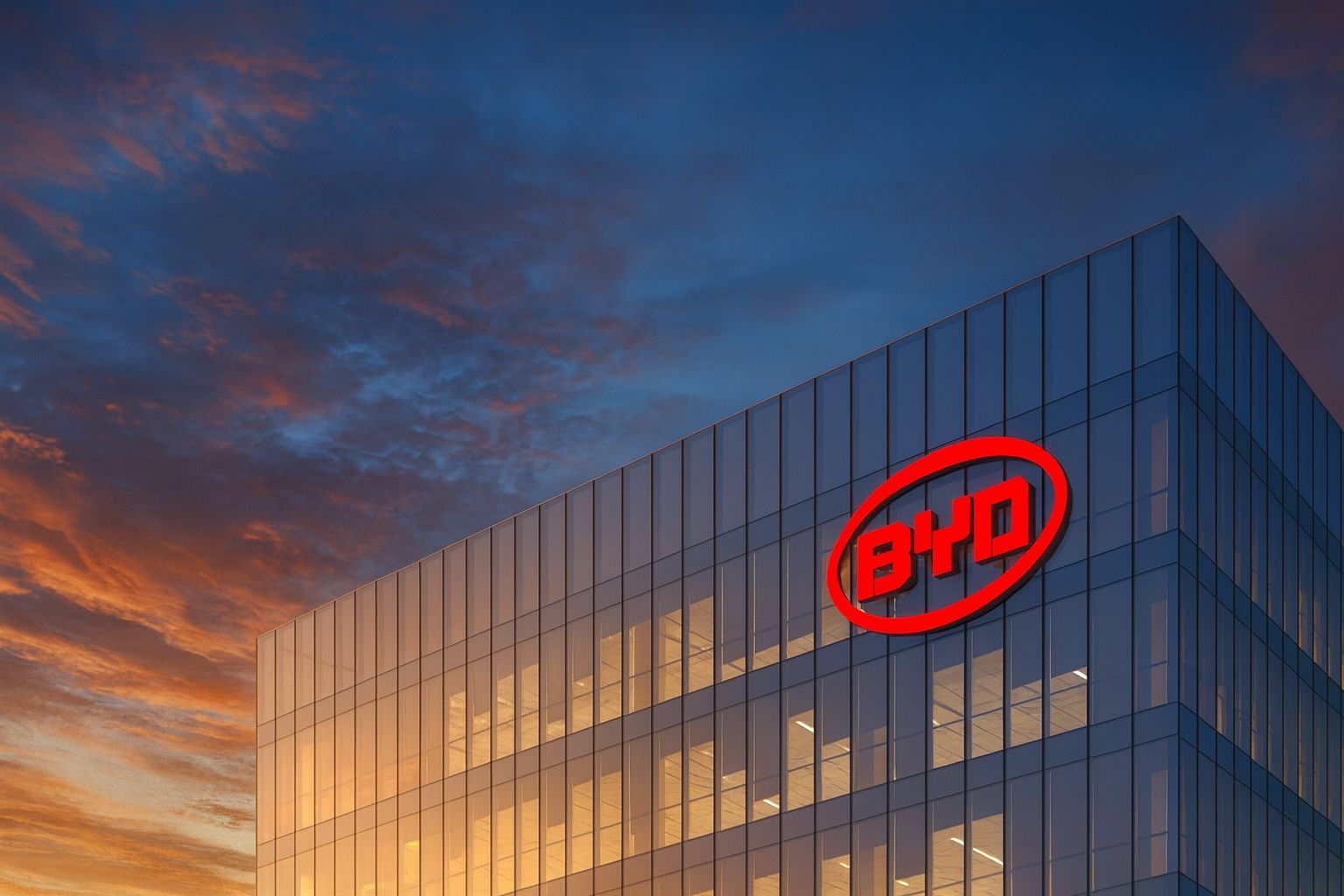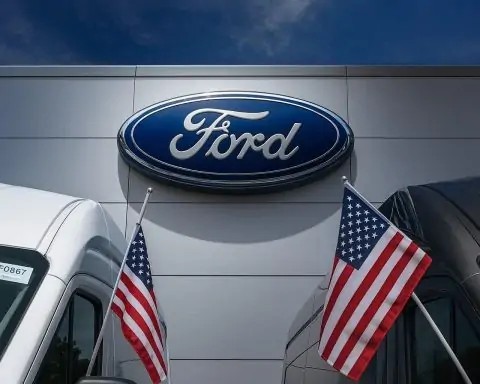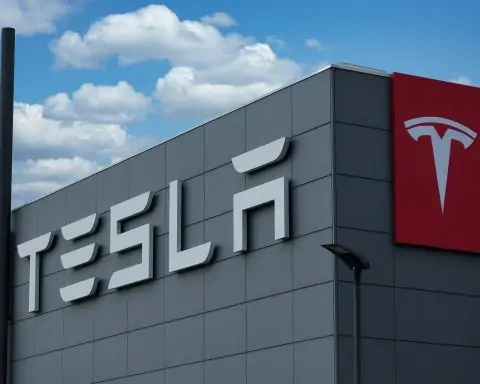- BYD’s European Expansion: China’s largest electric carmaker BYD is considering Spain as the site for its third European factory, joining planned plants in Hungary and Turkey, according to sources. The Spanish assembly plant would boost BYD’s European growth as it competes with Tesla, and advance Spain’s ambitions to be an EV manufacturing hub [1] [2].
- Why Spain – Low Costs & Clean Energy: BYD favors Spain due to its relatively low labor costs and robust clean energy network, leveraging the country’s huge solar power capacity [3]. Alberto De Aza, BYD’s country manager for Spain and Portugal, said Spain “would be an ideal location for further expansion of BYD’s European manufacturing footprint because of its industrial infrastructure and cheap electricity” [4].
- Final Decision Pending: BYD has not finalized the decision, with other countries still under consideration. A choice is expected by year-end 2025, pending approval from Chinese regulators [5]. Spain has emerged as the frontrunner (previously unreported), though any announcement will require sign-off in China. Notably, BYD earlier weighed Germany, but high energy and labor costs there dimmed its appeal [6].
- BYD’s Rapid Rise in Europe: BYD’s sales are surging in Europe, climbing 280% in the first eight months of 2025 compared to a year earlier [7]. In Spain, BYD’s affordable EVs and hybrids have quickly captured about 10% of the electrified vehicle market – more than triple Tesla’s ~3.3% share – after BYD quadrupled its Spanish dealer network in a year [8] [9]. BYD – now the world’s #1 EV maker by volume – registered over 70,000 cars in Europe in the first half of 2025 (a 311% YoY jump) as it cracked Europe’s top 25 auto brands [10].
- Intensifying Tesla Rivalry: Once seen as an upstart, BYD is now outselling Tesla in some metrics. It topped Tesla’s EU new-car sales in August 2025 for the second consecutive month [11], as Tesla’s Europe market share slipped amid fierce competition [12]. Globally, Tesla’s lead is eroding – BYD overtook Tesla in quarterly EV sales earlier in 2025 [13] – prompting Tesla to cut prices and race to expand output. On news of BYD’s Spain expansion plans, BYD’s U.S.-listed shares dipped ~1.4% while Tesla’s stock fell ~2.6%, reflecting investor jitters about the escalating competition [14] [15].
BYD Bets on Spain for Third European Plant
BYD (Build Your Dreams) has rapidly become a global electric vehicle powerhouse, and its next big move could be building a factory in Spain. Reuters reports that BYD – China’s #1 automaker by sales – views Spain as the “top candidate” for its third European car plant, as the company seeks to expand its foothold on the continent [16]. The new plant would follow BYD’s first two European production sites: one under construction in Hungary (though mass production there was recently pushed to 2026) and another planned in Türkiye (Turkey) slated to open in 2026 [17] [18]. Establishing a manufacturing hub in Spain would mark a major milestone in BYD’s European strategy, enabling it to build cars locally for EU customers rather than exporting from China.
Spain has emerged as BYD’s preferred choice after a months-long site search. Insiders say Spain’s combination of affordable manufacturing costs and plentiful renewable energy is a big draw [19]. BYD can benefit from Spain’s extensive solar and wind power infrastructure to run a green factory, aligning with the company’s image as a clean-energy champion. Labor costs in Spain are also competitive compared to Northern Europe, and the country’s auto industry expertise is well-established (Spain is Europe’s second-largest car producer). One source told Reuters that Spain “ticked all the right boxes” for BYD’s needs, from costs to its clean power grid [20] [21].
Another advantage is Spain’s welcoming stance toward Chinese EV investment. Diplomatic ties between Spain and China have warmed in recent years: notably, Spain abstained from an EU vote to impose tariffs on Chinese-made EVs, avoiding friction with Beijing [22]. (In contrast, countries that supported tariffs faced informal pushback; China reportedly advised its automakers to halt investments in nations backing the EU’s tariff proposal [23].) Spain’s neutrality on this issue, combined with government incentives for EV projects, makes it a politically safe and attractive choice for BYD. Indeed, Spain’s government has a €5 billion plan (using EU recovery funds) to attract EV and battery makers [24], which has already lured Volkswagen, China’s Chery, battery giant CATL and others to invest. Landing BYD’s plant would be a trophy for Madrid’s ambitions to become an EV manufacturing hub.
BYD’s Spain and Portugal country manager, Alberto De Aza, has publicly hinted that Spain would be ideal for BYD’s expansion. “Spain would be an ideal location for further expansion of BYD’s manufacturing footprint because of its industrial infrastructure and cheap electricity,” De Aza told Reuters last month [25]. He noted Spain’s strong supplier base, skilled workforce, and low energy prices (thanks to renewables) as key selling points. BYD is also reportedly eyeing locations in Spain that could provide easy access to export markets via port or rail, ensuring the new factory could efficiently ship cars across Europe.
No final decision has been announced yet. A third source cautioned BYD’s board in Shenzhen is still weighing options in other countries as well [26]. Some reports indicate France and the UK had been in the running, and BYD earlier scouted locations in Germany [27]. However, Germany’s higher electricity and labor costs and recent political scrutiny of Chinese investment have made it less likely. BYD aims to finalize its choice by the end of 2025, pending regulatory approvals in China [28]. If Spain is approved, an announcement could come within weeks, industry watchers speculate. Spain’s Industry Ministry and BYD declined to comment on the ongoing talks [29], as negotiations and incentive discussions are likely confidential.
For Spain, landing BYD’s plant would be a major win, potentially creating thousands of jobs and solidifying the country’s status as Europe’s EV hotspot. “This would bolster Spain’s aim of becoming a major hub for electric vehicle production,” Reuters noted [30]. The country lacks a homegrown auto champion (SEAT is owned by Volkswagen), so attracting foreign EV manufacturers has been central to its strategy. As analyst Felipe Munoz of JATO Dynamics observed, Spain “doesn’t have a strong local carmaker”, which makes it fertile ground for newcomers like BYD to establish themselves [31]. In other words, Spain is eager for a flagship EV brand to call its own, and BYD could fill that void.
Low-Priced EVs Fuel BYD’s Spanish Surge
Beyond its appeal as a factory site, Spain is already one of BYD’s most successful European markets. Spanish car buyers have been snapping up BYD’s electric and plug-in hybrid models at a remarkable pace in 2025, thanks largely to aggressive pricing and rapid dealership expansion. When Javier Hernandez, a 51-year-old in Barcelona, went car shopping this year, he ended up choosing a BYD Seal U plug-in hybrid because it was nearly €10,000 cheaper than comparable models from Volkswagen and Peugeot [32] [33]. “The value for money was better,” Hernandez told Reuters, noting that with government EV subsidies, his BYD cost around €30,000 versus over €40,000 for European rivals [34] [35].
Stories like this have played out across Spain. BYD, virtually unknown in Europe a couple years ago, now offers some of the most affordable EVs/PHEVs in the market for their size and range. “Until the arrival of BYD, if you wanted to buy an electric vehicle, you had to spend a hell of a lot of money,” said BYD’s Alberto De Aza, highlighting how BYD undercut the competition on price [36]. BYD’s strategy has included generous discounts, promotions, and partnerships (for example, deals on home chargers and financing) to entice cost-conscious buyers. This approach has paid off dramatically in Spain: BYD’s share of Spain’s electrified vehicle market (EVs + PHEVs) hit 10% in July 2025, more than double its average share across Europe [37]. By comparison, Tesla’s share in Spain was only ~3.3%, trailing far behind BYD [38].
One reason is that BYD sells hybrids as well as pure EVs, catering to Spanish consumers who remain wary of going fully electric due to charging infrastructure gaps. Spain has been slower than northern Europe in EV charger rollout – about 50,000 public charging points nationwide, far fewer than countries like the Netherlands [39]. As a result, plug-in hybrids (like BYD’s popular Seal U and ATTO 3 DM-i) have strong appeal for drivers who want the option of a gasoline engine for long trips. BYD recognized this demand and has leaned into PHEVs as a market entry strategy. In fact, the BYD Seal U is now Spain’s top-selling plug-in hybrid of 2025, according to industry data [40].
BYD has also raced to build out its sales network in Spain. Dealership count jumped from just 25 last year to nearly 100 BYD outlets across Spain in 2025 [41], blanketing all major cities and regions. This rapid expansion, coupled with heavy marketing, has made the BYD brand far more visible. In contrast, many legacy automakers have been cutting back on dealerships; Spanish auto dealer association data show brands like Volkswagen and Audi have closed dozens of showrooms over the past decade [42]. BYD swooped in to take advantage of this retrenchment, signing up independent dealers eager for new brands to sell.
Local competitors acknowledge the pressure. “Chinese competitors are increasing the pressure, and not just on us,” admitted Markus Haupt, interim CEO of VW-owned SEAT, which is headquartered in Spain [43]. He noted that BYD and other Chinese automakers are forcing European brands to fight harder on price and tech features in the EV race. Indeed, other Chinese brands are following in BYD’s wake – SAIC’s MG and Chery’s Omoda have also gained footholds in Spain, with MG reaching nearly 5% market share and introducing budget models that challenge Western rivals [44]. Through August, Chinese automakers collectively sold 14,000+ cars in Spain in 2025, a 675% year-on-year jump (BYD alone accounts for much of that) [45]. This influx has rattled incumbents but also benefited consumers with more choices and better deals.
The strong sales ramp-up in Spain reinforces BYD’s case for investing in local production. The company has publicly stated it wants to produce all vehicles for the European market within Europe by 2026-2027 [46]. This would not only cut shipping costs and delivery times, but also help BYD dodge the EU’s import tariffs on China-made EVs (which currently add ~10% plus any anti-subsidy duties) [47] [48]. BYD’s Hungary and Turkey plants are part of that plan, but a facility in Spain – right inside one of its best markets – could be pivotal to meeting the 100% localized production goal [49]. It would also strengthen BYD’s branding in Europe: “Made in EU” cars might ease any remaining consumer skepticism about Chinese-made quality, while currying favor with European policymakers keen on local manufacturing.
Showdown with Tesla: BYD Emerges as True Rival
BYD’s aggressive European expansion is increasingly bringing it head-to-head with Tesla, the American EV leader, on Tesla’s once-dominant turf. For much of the past decade, Tesla had minimal competition in the Western EV market – but 2025 has marked a turning point, with BYD and others rapidly eroding Tesla’s lead. In fact, BYD outsold Tesla in the European Union in both July and August 2025, a stunning feat for a newcomer. Data from the European Auto Manufacturers Association (ACEA) showed BYD’s EU sales in August jumped over 200% year-on-year, grabbing about 1.3% market share (up from almost nothing a year prior), while Tesla’s EU sales fell 36% and its share slid to 1.2% [50] [51]. This was the second month in a row that BYD edged out Tesla in Europe – a trend that would have been hard to imagine just a couple years ago.
To be sure, Tesla still sells the top model in Europe (the Model Y crossover) and remains a powerful force. But BYD is catching up by offering a wider range of models and powertrains. Unlike Tesla’s all-electric lineup, BYD produces EVs and plug-in hybrids, covering more segments and price points. BYD’s popular ATTO 3 SUV and Dolphin hatchback are aimed at the affordable end of the market where Tesla currently has no offerings below the Model 3. BYD also tends to load its cars with features (advanced driver aids, fancy interiors) while undercutting Tesla on price. European car buyers have taken notice – BYD delivered over 70,000 vehicles in Europe in the first half of 2025, up 311% from the year prior [52]. By mid-2025, BYD had even cracked the top 25 best-selling auto brands in Europe (of any type, not just EVs), outselling some Japanese manufacturers that have been in the market for decades [53].
Globally, BYD’s rise has been equally remarkable. It overtook Tesla in Q1 2025 as the world’s largest seller of battery EVs (not even counting its hybrid sales), thanks to a 39% surge in volume that quarter [54]. BYD sold around 1.8 million electric and plug-in hybrid cars in 2024, mostly in China, and is on track for well over 2 million in 2025 – on par with Tesla’s output [55] [56]. This has not gone unnoticed by industry leaders. At a February investor conference, Ford CEO Jim Farley pointed to BYD as the “leading threat in ‘a global race’ to develop profitable EVs.” “We have to compete and win against BYD,” Farley warned [57], emphasizing that Western automakers must not underestimate the Chinese contender. BYD’s ability to profitably make lower-cost EVs, thanks in part to its in-house battery production (Blade batteries) and scale in China, is a key competitive advantage that legacy companies and Tesla are scrambling to match.
Tesla, for its part, has responded to the new competition by cutting prices in Europe multiple times in 2023–2025, squeezing its own margins to defend market share [58]. It has also sped up European production at its Berlin Gigafactory and even started exporting Germany-made Model Y units to other markets. However, Tesla’s Europe sales in 2025 have still lagged behind the overall EV market growth, as more competitors (BYD, SAIC’s MG, Geely’s Polestar, Hyundai/Kia, etc.) flood the zone [59] [60]. In some monthly brand rankings, Tesla has been overtaken not only by BYD but even by MG in overall European sales [61]. The era of Tesla being the almost singular EV option is over – the race is now wide open.
Experts: BYD’s Global Ambitions and Challenges
The planned Spanish factory underscores BYD’s long-term ambition to be not just a Chinese success story but a global automotive giant. BYD has publicly set a goal to sell half of its cars outside China by 2030, up from roughly 10% in 2022 [62] [63]. Hitting that target would mean BYD becomes one of the world’s highest-volume automakers, rivaling the likes of Toyota and Volkswagen in total sales [64] [65]. Achieving it will depend heavily on Europe – and to a lesser extent, new markets like Latin America and Southeast Asia – since BYD (like other Chinese automakers) is locked out of the U.S. market by trade barriers for now [66].
Analysts say Europe is BYD’s most critical battleground abroad. “They have the right products to repeat their Chinese success in overseas markets,” one industry source told Reuters, pointing to BYD’s mix of affordable models and advanced tech [67]. But there are also hurdles: European consumer awareness of Chinese brands is still nascent, and EU trade policy remains a wild card. Brussels launched an anti-subsidy investigation into Chinese EV imports in late 2024, which could lead to new tariffs or quotas. BYD has tried to mitigate this by localizing production (hence the European plants) and even sending cars as knock-down kits to be assembled in places like Germany to qualify as “EU-made.” It’s also shipping some models with smaller batteries that can be swapped or upgraded locally – a creative workaround to reduce import duties on full EVs [68] [69].
Europe’s own auto giants are not standing still either. Volkswagen, for example, is investing billions in its new affordable EV lineup and has vowed to “fight back” in the EV price war. It helps BYD that Spain – where VW’s SEAT and Cupra are based – currently has no indigenous EV champion strongly defending the home turf. This makes Spain something of a beachhead for BYD: a market where it can establish dominance relatively unhindered by domestic incumbents, then expand outward. “Spain’s lack of a national automotive champion makes it fertile ground for Chinese expansion,” notes Felipe Munoz [70]. Neighboring France, by contrast, has Renault/Peugeot to protect and has been more resistant to Chinese autos, and Germany has its Big Three. Spain may prove to be BYD’s European golden opportunity.
All eyes will now be on BYD’s next moves. If the Spanish factory gets the green light, construction could begin in 2026 with production in 2027 or 2028, analysts predict. BYD’s goal of making “all EVs for sale in Europe locally within three years” means the clock is ticking to get facilities up and running [71]. In the meantime, the Tesla-vs-BYD rivalry is set to only intensify. European EV buyers in 2025 have more choices than ever, and BYD’s blend of budget-friendly models and feature-rich tech is proving to be a compelling alternative to Tesla’s lineup. Tesla CEO Elon Musk, when asked about BYD in a recent earnings call, laughed years ago at the idea of BYD as a serious competitor – but nobody is laughing now. As BYD stakes its claim in Spain and beyond, the battle for the future of the EV market is entering a fierce new phase, with East and West going wheel-to-wheel on European roads.
Sources: BYD expansion plans and quotes (Reuters) [72] [73] [74]; Spanish EV market data and industry comments (Reuters) [75] [76]; BYD vs Tesla sales figures (ACEA via Reuters, GuruFocus) [77] [78]; global EV rankings and expert commentary (TS2.Tech, Reuters) [79] [80].
References
1. www.reuters.com, 2. www.reuters.com, 3. www.reuters.com, 4. www.reuters.com, 5. www.reuters.com, 6. www.reuters.com, 7. www.reuters.com, 8. www.reuters.com, 9. www.reuters.com, 10. ts2.tech, 11. www.reuters.com, 12. www.reuters.com, 13. ts2.tech, 14. www.gurufocus.com, 15. www.gurufocus.com, 16. www.reuters.com, 17. www.reuters.com, 18. www.reuters.com, 19. www.reuters.com, 20. www.tipranks.com, 21. www.tipranks.com, 22. www.reuters.com, 23. www.reuters.com, 24. www.reuters.com, 25. www.reuters.com, 26. www.reuters.com, 27. www.reuters.com, 28. www.reuters.com, 29. www.reuters.com, 30. www.reuters.com, 31. www.reuters.com, 32. www.reuters.com, 33. www.reuters.com, 34. www.reuters.com, 35. www.reuters.com, 36. www.reuters.com, 37. www.reuters.com, 38. www.reuters.com, 39. www.reuters.com, 40. www.reuters.com, 41. www.reuters.com, 42. www.reuters.com, 43. www.reuters.com, 44. www.reuters.com, 45. www.reuters.com, 46. www.reuters.com, 47. www.reuters.com, 48. ts2.tech, 49. www.reuters.com, 50. www.reuters.com, 51. www.reuters.com, 52. ts2.tech, 53. ts2.tech, 54. ts2.tech, 55. www.reuters.com, 56. www.reuters.com, 57. www.reuters.com, 58. ts2.tech, 59. ts2.tech, 60. ts2.tech, 61. ts2.tech, 62. www.reuters.com, 63. www.reuters.com, 64. www.reuters.com, 65. www.reuters.com, 66. www.reuters.com, 67. www.reuters.com, 68. ts2.tech, 69. ts2.tech, 70. www.reuters.com, 71. www.reuters.com, 72. www.reuters.com, 73. www.reuters.com, 74. www.reuters.com, 75. www.reuters.com, 76. www.reuters.com, 77. www.reuters.com, 78. www.gurufocus.com, 79. ts2.tech, 80. www.reuters.com










